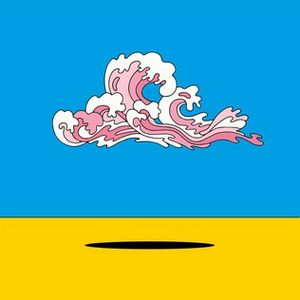Ani Couni Chaouani facts for kids
Ani Couni Chaouani (which in the Arapaho language is Ani’qu ne’chawu’nani) is a very old and special song. It's a traditional hymn from the Native American Arapaho tribes. These tribes lived in the plains areas of Colorado and Wyoming in the United States.
Contents
What is Ani Couni Chaouani?
For a long time, people thought this hymn came from the Iroquois Nation, who lived in the Northeast. But in 2017, a researcher from Radio-Canada found out the truth. The song actually came from the middle of the United States. It was created by the Arapaho tribes in Colorado and Wyoming.
This hymn is sung in a sad or sorrowful way. When people dance to this song, they often cry. They think about their struggles and how much they depend on others or nature.
What Do the Lyrics Mean?
The words of "Ani Couni Chaouani" are a prayer. They ask for help and show feelings of sadness and need. Here are the original words and what they mean in English:
| Original | Translation |
|---|---|
|
Ani’qu ne’chawu’nani’, |
Father, have mercy on me, |
How the Music Sounds
The music for "Ani Couni Chaouani" is very old. It was written down in a book called the Fourteenth annual report of the Bureau of ethnology to the secretary of the Smithsonian institution in 1896. This book shows the notes of the original tribal version in the Arapaho tongue.
<score sound="1"> \new Staff \with { midiInstrument = "flute" } { \relative c' { \tempo "Moderato" \key d \minor \time 7/4 f8[( g8]) a4 a8[ g8] f4 a8.[( f16]) f8[( d8]) d4 f8[( g8]) a4 a8[ g8] f4 a8.[( f16]) f8[( d8]) d4 % \newSpacingSection \time 4/4 g4 g4 g4 a8.[ f16] d4 f8[( d8]) d4 d4 g4 g4 g4 a8.[ f16] d4 f8[( d8]) d4 d4 % \newSpacingSection \time 3/4 d8[ e8] f8[( d8]) f4 g4 f8[( d8]) d4 d8[ e8] f8[( d8]) f4 g4 f8[( d8]) d4 \bar "|." } }
\addlyrics { \lyricmode { A -- ni’ -- qu ne’ -- cha -- wu’ -- na -- ni’, A -- ni’ -- qu ne’ -- cha -- wu’ -- na -- ni’; A -- wa’ -- wa bi -- qā -- na’ -- ka -- ye’ -- na, A -- wa’ -- wa bi -- qā -- na’ -- ka -- ye’ -- na;
I -- ya -- hu’h ni’ -- bi -- thi’ -- ti, I -- ya -- hu’h ni’ -- bi -- thi’ -- ti. } } \midi { \context { \Score tempoWholesPerMinute = #(ly:make-moment 90 4) } } </score>
Modern Versions and Covers
Many musicians have sung their own versions of "Ani Couni Chaouani" over the years. One notable artist was Madeleine Chartrand, who covered it in 1973.
Natasha St-Pier also included her version on her 2015 album, Mon Acadie.
Polo & Pan's "Ani Kuni"
Quick facts for kids "Ani Kuni" |
||||
|---|---|---|---|---|
 |
||||
| Single by Polo & Pan | ||||
| from the album Cyclorama | ||||
| Released | 7 May 2021 | |||
| Recorded | 2021 | |||
| Genre | Ethnic music, fusion music | |||
| Label | Hamburger Records, Ekler'O'Shock, Virgin Records (France) | |||
| Songwriter(s) | Arapaho traditional tune | |||
| Polo & Pan singles chronology | ||||
|
||||
In 2021, a French music group called Polo & Pan made their own version of the song. They called it "Ani Kuni." It was part of their second album, Cyclorama.
- Charts
This version of the song became popular in some places:
| Chart (2021) | Peak position |
|---|---|
| Belgium (Ultratop 50 Wallonia) | 6 |
| France (SNEP) | 9 |
In 2022, an artist named Batone, from Brazil and Canada, also released his version. He recorded it live outdoors during a big storm in Brazil.
See also
 In Spanish: Ani Kuni para niños
In Spanish: Ani Kuni para niños

